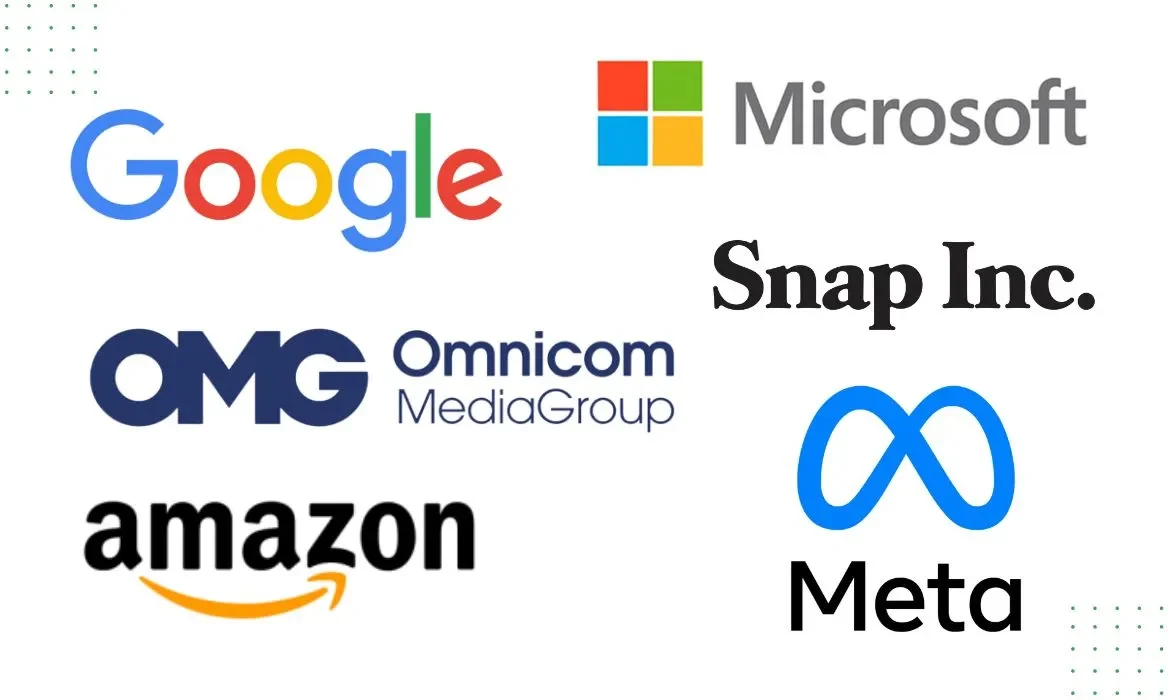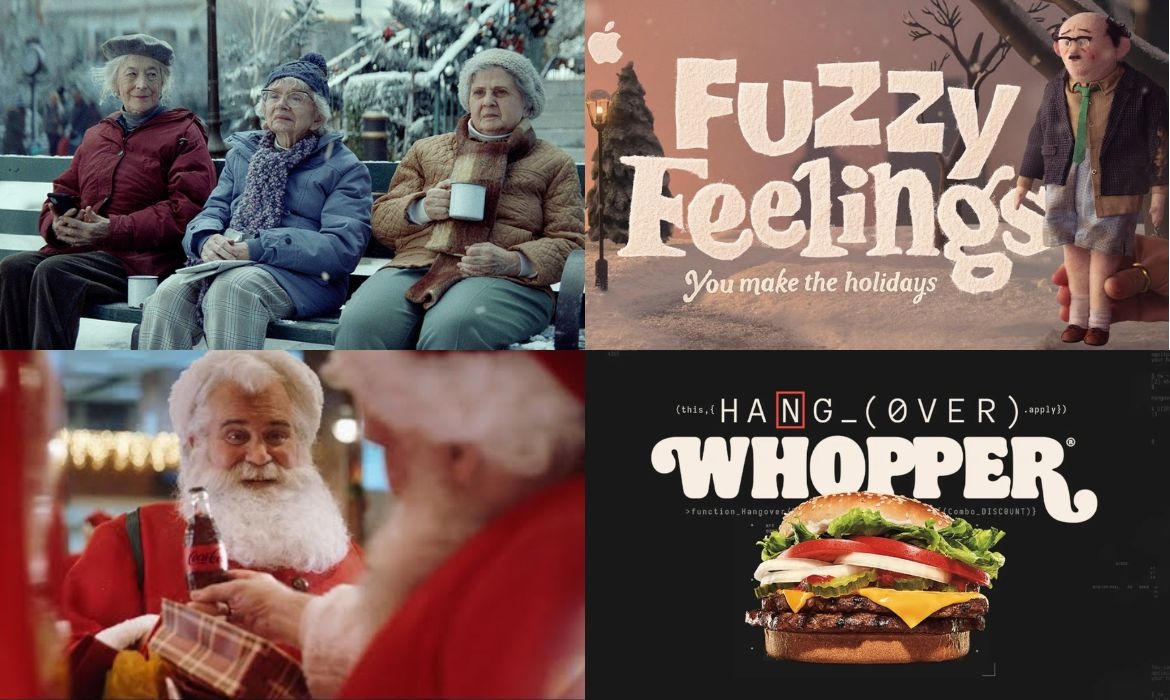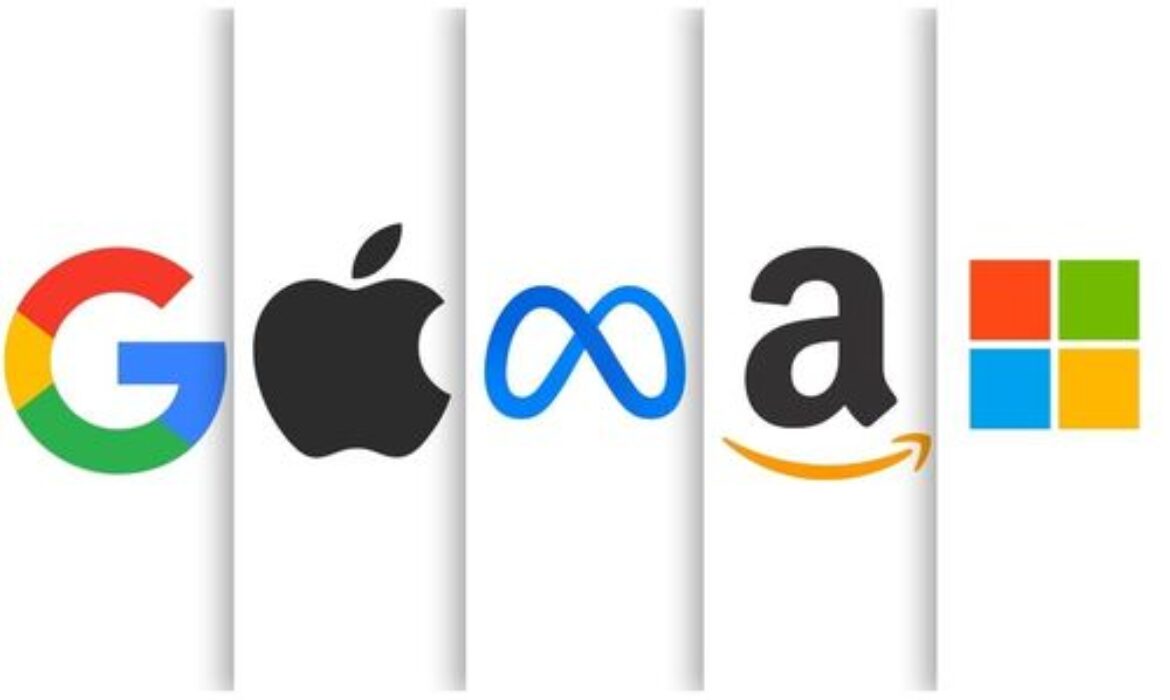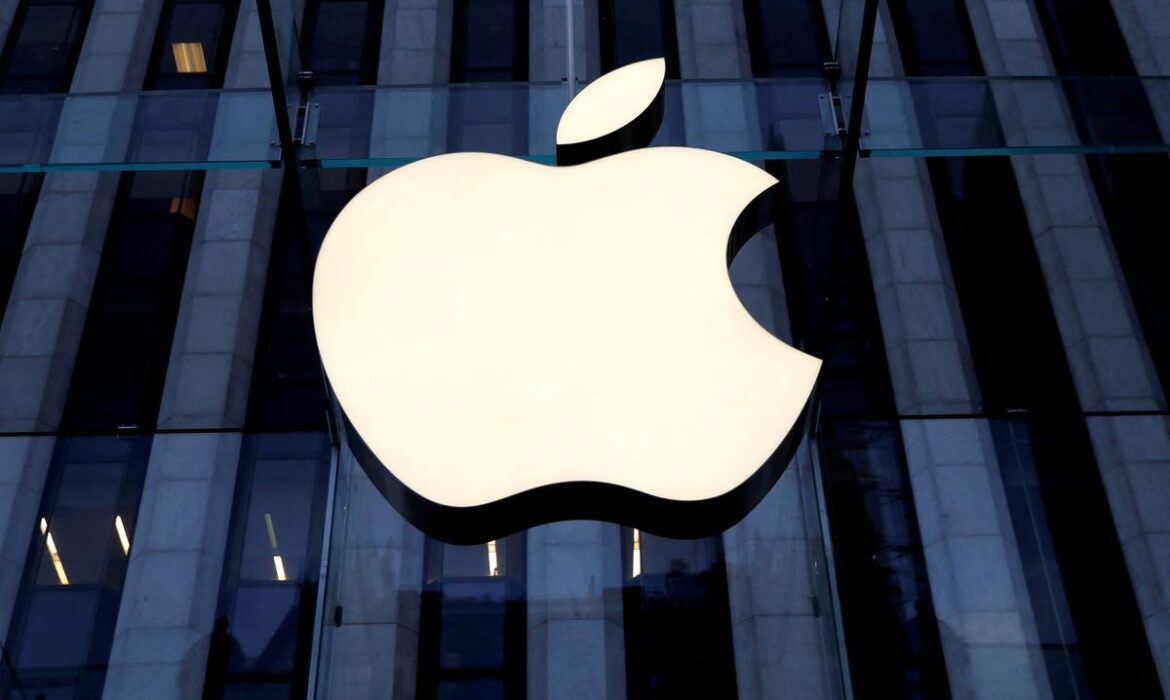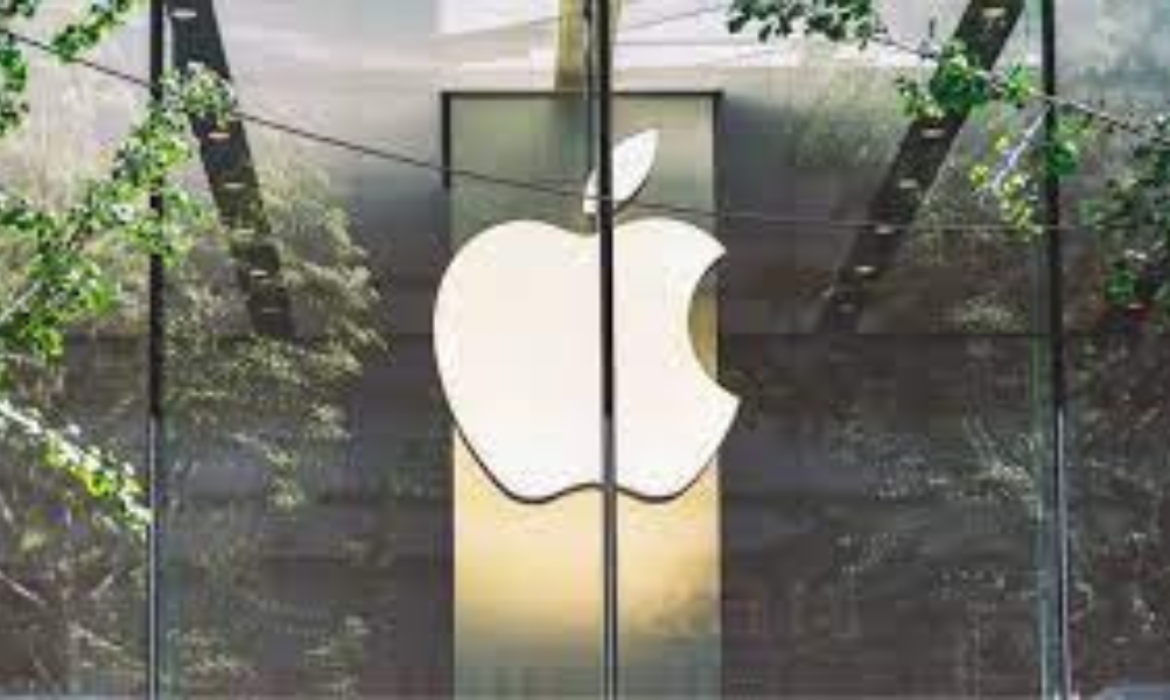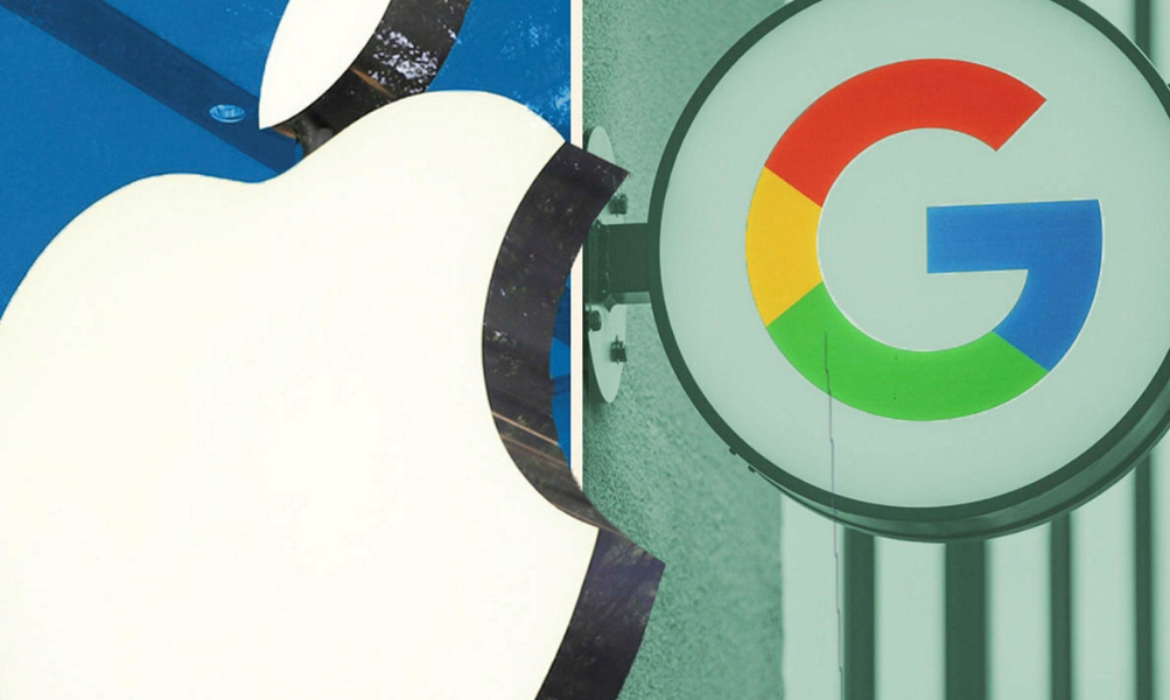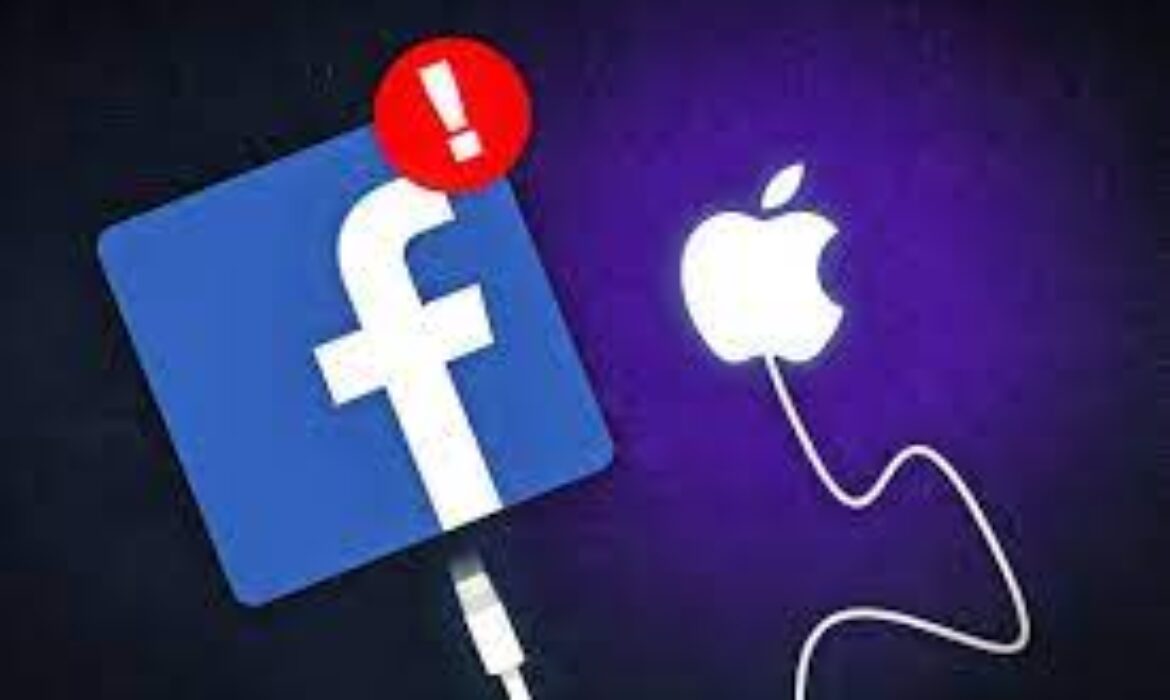Deciphering Big Tech Giants’ Quarterly Results: Here’s What They Say!
The Big Techs recently disclosed their fourth-quarter results. For those who are interested in the industry, these are a few key findings and insights from the quarterly reports.
![]()
ALPHABET
Alphabet Inc., the parent company of Google, exceeded Wall Street forecasts with its fourth-quarterly earnings report. Ad sales, however, failed to expand quickly enough to keep up with experts’ predictions. YouTube, which has been contributing to increased growth, came up barely short of projections. With over 2 billion monthly users and an average of 70 billion views per day, YouTube Shorts continues to be a top priority for Google.
The cloud division, which was losing money for years while it attempted to compete with Microsoft Azure and Amazon Web Services, is where the company makes its money. Google Cloud continued to be a growth engine in the fourth quarter, expanding by 26%. The primary driver of revenue growth continues to be search. While brand and direct response advertising drove YouTube advertising, growth in retail was the main driver of Google Search and other forms of advertising revenue.
By the numbers
- Revenue reported was $86.31 billion, up 13.5%.
- Google Search and other advertising revenues rose to $48 billion, up 13% Yo-Y.
- Google cloud computing revenue was $9.19 billion up 26% Yo-Y.
- Advertising revenues reported were $65.52.
- YouTube advertising reported $9.2 billion, up 16% Yo-Y.
- Network advertising revenue was $8.3 billion, down 2%.
- Traffic acquisition costs were $13.9 billion.
Google is beginning to provide generative AI to an increasing number of companies to assist them in creating more effective campaigns and advertisements. Google unveiled Gemini, a large language model that it claims to be its most powerful AI model, in December. The business intends to license Gemini to users via Google Cloud so they can utilize it in their apps. Additionally, Google plans to test the usage of Gemini in Search, where it will speed up consumers’ Search Generative Experience (SGE).
Sundar Pichai, CEO, said in the conference call,
We are pleased with the ongoing strength in Search and the growing contribution from YouTube and Cloud. Each of these is already benefiting from our AI investments and innovation. As we enter the Gemini era, the best is yet to come.
Ruth Porat, President and Chief Investment Officer, CFO said,
We ended 2023 with very strong fourth quarter financial results, with Q4 consolidated revenues of $86 billion, up 13% year over year. We remain committed to our work to durably re-engineer our cost base as we invest to support our growth opportunities.
Read More: Google Integrates Gemini AI Into Search Ads Platform

META
Meta exceeded Wall Street expectations and had a positive fourth quarter. The positive outcomes show that digital advertising has recovered well from its 2022 decline. It was a significant year for both the business and the community. According to Meta’s estimation, over 3.1 billion individuals use at least one of the Meta applications daily. The already enormous social media company keeps on adding new users across all platforms.
Overall, Meta’s Q4 revenue increased by 25% over the previous year. Threads, the business’s Twitter-like social app that launched in July 2023, now has over 130 million monthly active users, according to the company. As is usual, almost all of Meta’s revenue came from sales of digital advertising. Chinese retailers have increased their spending to reach customers worldwide, which has contributed to Meta’s financial turnaround during the past year. They have been heavily investing in Facebook and Instagram ads.
By the numbers
- Revenue was $40.11 billion, an increase of 25% Yo-Y, and $134.90 billion, an increase of 16% Yo-Y for the full year.
- Facebook DAUs were 2.11 billion on average, an increase of 6% Yo-Y.
- Facebook MAUs were 3.07 billion, an increase of 3% Yo-Y.
- Family DAPs were 3.19 billion on average, an increase of 8% Yo-Y.
- Family MAPs were 3.98 billion, an increase of 6% Yo-Y.
- Ad Impressions delivered across all Meta apps increased by 21% Y-o-Y and the average price per ad increased by 2% Yo-Y.
Strong sales of the company’s Quest device during the holiday season drove record sales of $1.1 billion for the metaverse-focused Reality Labs division. Additionally, Zuckerberg stated that the ad business, which is expanding more quickly than Google, has benefited from advancements in artificial intelligence. By the end of the year, Meta plans to completely launch Meta AI assistant and further AI chat experiences in the United States using generative AI.
Meta Chief Executive Mark Zuckerberg said in a news release,
We had a good quarter as our community and business continue to grow. We’ve made a lot of progress on our vision for advancing AI and the metaverse.
Susan Li, CFO, stated that Meta’s big areas of focus in 2024 will be working towards the launch of Llama 3, expanding the usefulness of Meta AI assistant, and progressing on our AI studio roadmap to make it easier for anyone to create an AI.

AMAZON
For the fourth quarter of 2023, Amazon reported better-than-expected revenues, exceeding sales forecasts thanks to new generative AI capabilities in its cloud and e-commerce businesses, which drove strong growth throughout the Christmas season. The e-commerce behemoth had a great holiday season. Over 1 billion items were bought on the site in the course of the company’s 11-day Black Friday and Cyber Monday sales. Additionally, the events helped bring in new Prime members and save consumers billions of dollars.
With 26% Yo-Y growth in worldwide advertising, Amazon had a great result. Because machine learning has improved ad relevancy, sponsored products have been the main driver of advertising strength. The shift in customer attention towards encouraging innovation and introducing new workloads to the cloud was attributed to the increase in AWS revenues.
By the numbers
- Revenue was reported at $169.9 billion versus expectations of $166.2 billion, up 13.9% Yo-Y.
- AWS Revenue 13% increase in sales over the prior year to a total of $24.4 billion.
- Advertising sales of $14.7 billion.
- Subscription services were up 13%, reporting $10.4 billion in revenue.
Amazon has launched Rufus, a new AI shopping assistant trained in Amazon’s product catalog and other web-based information. The tool, driven by generative AI, may provide product recommendations and respond to queries from users of the Amazon mobile app. The corporation believes that advancements in AI might bring in tens of billions of dollars for its cloud computing division.
Chief Executive Andy Jassy said in Amazon’s press release
This Q4 was a record-breaking holiday shopping season and closed out a robust 2023 for Amazon. While we made meaningful revenue, operating income, and free cash flow progress, what we’re most pleased with is the continued invention and customer experience improvements across our businesses.
Amazon’s Chief Financial Officer Brian Olsavsky added,
We’re coming off a period where we’ve done a lot of hiring. There’s a general feeling in most teams that we’re trying to hold the line on headcount.
Read More: Amazon and Reach Partner for Targeted Ads Ahead of Third-Party Cookie Phase-Out
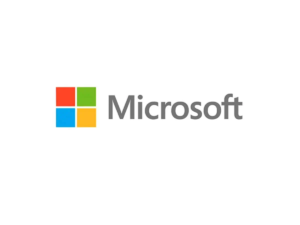
MICROSOFT
Microsoft had a record-breaking quarter, mostly due to Microsoft Cloud’s ongoing growth. Strong executions in the commercial areas and device advancements were credited for the anticipated growth in its quarterly results. The robust demand for Microsoft Cloud offerings, particularly AI services, led to enhancements in Azure, which in turn drove revenue growth.
On October 13, 2023, Microsoft completed the acquisition of Activision Blizzard. With the acquisition, the business expanded its player base by hundreds of millions. It broke previous records for MAUs on Xbox, PC, and mobile devices with over 200 million MAUs in a single month. The business has been integrating AI into every aspect of the IT stack, bringing in new clients and fostering increased efficiency. Additionally, the business reported increased revenue from Windows OEM sales and improved performance in consumer markets.
By the numbers
- Revenue recorded was $62.0 billion, an increase of 18%.
- Intelligent Cloud unit $25.9 billion, increasing 20% ahead of expectations.
- Azure revenues increased by 30%.
- LinkedIn’s revenues increased by 9%.
- Microsoft Cloud Revenue was $33 billion, up 24%.
- Search and news advertising revenue excluding traffic acquisition costs increased by 7%
AI is helping to drive revenue in the Azure consumption business. Over the past year, Microsoft, Amazon, and Google have all invested billions of dollars in artificial intelligence (AI) in an attempt to overtake one another as the leading providers of AI software.
Satya Nadella, chairman and chief executive officer of Microsoft said,
We’ve moved from talking about AI to applying AI at scale. By infusing AI across every layer of our tech stack, we’re winning new customers and helping drive new benefits and productivity gains across every sector.
Amy Hood, Chief Financial Officer added,
While it’s early days for Microsoft 365 Copilot, we’re excited about the adoption to date and continue to expect revenue to grow over time.
Read More: Vodafone and Microsoft Sign 10-year Strategic Partnership for IoT, Cloud, AI and More
APPLE
In its first-quarterly report, Apple exceeded analysts’ projections for both revenue and profits, but it revealed a 13% drop in sales in China, one of its most significant regions. The tech giant surpassed 2.2 billion active devices, setting a new milestone for its installed base. Apple attributes this to extremely high levels of customer satisfaction and unmatched customer loyalty.
According to projections, Mac sales increased by less than 1% throughout the quarter. Nonetheless, this is a noteworthy comeback for the product line, which had an annual decline of about 34% in the September quarter. iPad sales are still declining. For the first time in iPad history, Apple did not introduce a new model in 2023.
By the numbers
- Revenue was $119.6 billion, up 2% Yo-Y.
- iPhone Revenue was $69.70 billion 6% up.
- Mac $7.78 billion 1% up Yo-Y.
- iPad $7.02 billion down 25% Yo-Y.
- Wearables, home, and accessories revenue was $11.95 billion, down 11%.
- Service Revenues $23.13 billion up 11% Yo-Y
Additionally, Apple unveiled the Apple Vision Pro, their most sophisticated personal electronics gadget to date. Customers in the United States will be able to purchase it via Apple stores; later in the year, it will also be available in other countries. It is considered a groundbreaking gadget that is years ahead of anything else and is based on decades of Apple ingenuity. Additionally, the company announced that customers may select any Apple Watch model that is carbon neutral for the first time.
Tim Cook, Apple’s CEO said in the conference call,
Today Apple is reporting revenue growth for the December quarter fueled by iPhone sales, and an all-time revenue record in Services. We are pleased to announce that our installed base of active devices has now surpassed 2.2 billion, reaching an all-time high across all products and geographic segments. And as customers begin to experience the incredible Apple Vision Pro tomorrow, we are committed as ever to the pursuit of groundbreaking innovation — in line with our values and on behalf of our customers.
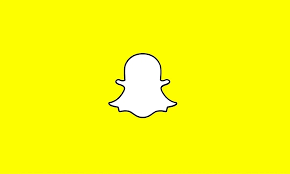
SNAP INC
Snap Inc. released a forecast that was slightly below Wall Street expectations. The company has now recorded six consecutive quarters of single-digit growth or revenue contraction. Snap Inc. struggled to recover from the downturn in the digital ad sector.
Snap Inc. has announced a new publisher partnership with Spotify in the United States, which will bring short-form highlights from Spotify’s podcasts to Spotlight and Stories. Additionally, the social media giant revealed new AI-powered tools for Snapchat+ users, enabling them to edit and share Snaps as well as create and send AI-generated images in response to text prompts.
By the numbers
- Revenue was $1,361 million, an increase of 5% Yo-Y.
- DAUs were 414 million, an increase of 39 million or 10% Yo-Y.
- MAUs increased 8% Yo-Y and surpassed 800 million in Q4.
- Subscriptions for Snapchat+ have reached over 7 million
Snapchat made a large investment in its augmented reality system. On average, almost 300 million Snapchat users use its augmented reality feature every day. Additionally, it has invested in automation and technology, used generative models, and optimized the ML Lens generation workflow.
Evan Spiegel, CEO said in the announcement,
2023 was a pivotal year for Snap, as we transformed our advertising business and continued to expand our global community, reaching 414 million daily active users. Snapchat enhances relationships with friends, family, and the world, and this unique value proposition has provided a strong foundation to build our business for long-term growth.

OMNICOM MEDIA GROUP
Omnicom exceeded analyst forecasts with impressive Q4 and full-year 2023 results. The growth in advertising and media during the quarter was driven once again by the performance of global media, with softer results from Omnicom’s advertising agencies serving as a partial offset.
Additionally, Omnicom completed the acquisition of Flywheel Digital, which will contribute to the introduction of scaled capabilities in the retail, media, and digital commerce sectors—the fastest-growing areas of the business. Furthermore, Omnicom disclosed that it has partnered with Getty Images as a first mover, giving them early access to a new generative artificial intelligence tool.
By the numbers
- Revenue reported increased $192.7 million or 5% organically, to $4,060.9 million.
- Advertising and media were up 9.3%.
- Public Relations was 2.9% down.
- Third-party service costs increased by $97.5 million or 12.4% to $884 million
Omnicom has reportedly spent tens of millions of dollars developing artificial intelligence over the past ten years, according to CEO John Wren. With the recent June 2023 launch of Omni Assist, a generative AI-powered virtual assistant that organizes, carries out, and produces advertising campaigns through cooperation with Microsoft, Omnicom became the first agency holding company to get access to the most recent Open AI GPT models.
John Wren, Chairman and Chief Executive Officer of Omnicom commented,
Omnicom finished 2023 with 4.4% organic revenue growth in the fourth quarter and 4.1% for the year. Looking out to full year 2024, we are set up well with solid fundamentals, tremendous opportunities in digital commerce and retail media from our Flywheel acquisition, and momentum in new business wins. Our accelerated investments in analytics and AI will enhance our ability to drive the best outcomes for our clients, while shareholders remain supported by our profitable operations and balanced deployment of capital through dividends, acquisitions, and share repurchases.
Read More: Decoding Big Tech Giants Quarterly Results: Insights Await!
A Lookback At the 5 Best Christmas Ad Campaigns of 2023
Once again, it’s the holiday season! Christmas 2023 is here, which means that snowmen, reindeer, and Santa Claus have also arrived. And it also means that Christmas advertisements are in their prime! This is the time of year when investing a penny in a Christmas advertisement yields substantial returns. Big and small brands alike view the Christmas season as a unique chance to engage with their customers and win over their hearts with the genuine spirit of the occasion.
These advertisements convey tales that encapsulate the charm and coziness of the holiday season, making them more than just commercials. This year, love, kindness, and unity were the main themes. So without further ado, let’s check out 2023’s top Christmas ad campaign!
Hangover Whopper: Burger King’s Hangover Cure
During the Christmas season, Burger King Brazil, in partnership with the creative brains at DM9 agency, launched the ‘Hangover Whopper‘ campaign to cater to those who may have overindulged in the celebrations. Burger King Brazil’s “Hangover Whopper” is designed to coincide with end-of-year celebrations, which are frequently characterized by late nights and difficult mornings. It links the delivery of fast food to a time when it’s most needed: during a hangover. The fast-food restaurant chain did this by using facial recognition technology to prevent hangover food.
The promotion delivers a matching combo coupon for the Whopper Jr. Double, Whopper, or Whopper Double based on a person’s “hangover level,” which is determined by facial recognition technology. A Whopper is designed to cure in addition to providing post-drinking nourishment. The suggested mix and discount provided increase with the degree of hangover. BK is satisfying customer desires and bringing a lighthearted touch to the holiday hangover experience with its creative campaign that integrates facial recognition technology. It’s a fun and unique way to eat your favorite Burger King sandwiches while recovering from the festivities.
Read More: An Innovative Triumph: Burger King x Stevenage FC Case Study
The World Needs More Santas: Coca-Cola Ad Campaign
The 2023 Coca-Cola Holiday Film is set in a bustling city filled with hundreds of Santas instead of the typical people! These Santas are shown in the commercial assisting individuals in little but significant ways, going above and beyond simply bringing presents. However, these Santas are only regular folks who display their “Inner Santa” by being giving and compassionate. The phrase “The World Needs More Santa’s” appears at the end of the video, reminding us that we may all embody the spirit of Santa via small deeds of kindness.
Coca-Cola and Christmas go hand in hand
Within the realm of holiday-themed advertising, Coca-Cola and Santa Claus have a unique relationship. Christmas advertisements for Coca-Cola have long been a holiday tradition, known for their capacity to inspire amazement, warmth, and happiness. The film explores the concept of what it means to be a “Santa.” Two things in particular stick out:
- The ad instantly establishes an emotional connection with the viewer by emphasizing small deeds of kindness.
- The brand maintains realism and relatability by using actual people and real-life situations.
These two elements give the brand a human touch and capture the essence of Christmas and Santa Claus. Additionally, the brand has chosen an admirable inclusive representation. This Coca-Cola commercial is one of the cutest of 2023 and is really uplifting!
Santa’s Cookie Overload Nightmare: Frito Lays
Is it unreasonable for Santa to request some savory munches? Father Christmas isn’t afraid to express his displeasure about constantly being left out cookies in the Frito-Lay festive area. The typically cheery present giver is actually so tired of the sweets that he’s having unsettling dreams about them. In his nightmare, an army of living gingerbread men overthrows him and flips him into the ground.
Savory Christmas
Is switching to potato chips going to help? Probably not, though. If nothing else, it would be a refreshing change of pace, as Rethink ironically demonstrated in their debut piece for Lay’s, a division of Frito Lay Canada. Santa is shown in the hero 60 secs ad below becoming slightly insane from cookie overload and going into a hallucinatory nightmare before being saved during one of his stops by a generous-hearted homeowner who loves Lay’s. At last, he finds relief when a father who is munching at midnight offers him some chips. Fortunately, Santa comes to his senses and has a Frito-Lay snack for himself before continuing to deliver gifts throughout the evening.
Frito-Lay Canada provided information for the commercial, implying that some people find the holidays to be a bit too sugary. During the holidays, 68% of Canadians occasionally crave something other than sweets, and over one-third really prefer savory food. The campaign began with an open letter from Santa Claus that appeared in national newspapers, expressing his request for something delicious to be served during the holidays. The advertisement is backed by out-of-home, digital, online, social, and national broadcast buys.
Joy is Shared: Amazon
Amazon’s Christmas ad from 2023 is evoking strong emotions this season. The commercial, which is part of a worldwide marketing campaign named “Joy is Shared,” depicts the story of enduring friendship and finding joy in the little things in life. The company’s most recent seasonal blitz revolves around a 60-second commercial called “Joy Ride.” It features three elderly women seated on a park bench outside. They observe kids and teenagers sliding down a hill in a sight that seems to take them back to their early years. Later, on a joyful hike down the hill, one of the women places an order on Amazon for seat cushions. The three of them then slide together as memories from the past begin to clear.
A Christmas Significance
The promo is part of Amazon’s internal creative team’s integrated “Joy is Shared” campaign. The ad demonstrates that certain pleasures endure a lifetime. It fuses the past and present with an instrumental rendition of the Beatles’ “In My Life.” With marketers realizing that today’s consumers need to prioritize their health and well-being, the joy topic has become increasingly prominent in the past year. Offering happy moments can assist businesses in connecting on a deeper emotional level with their target audiences; storytelling is an excellent method to do this. The emotionally charged content may strike a chord with viewers who are concerned about how rising prices may affect their Christmas plans.
Apple’s Fuzzy Feeling
Apple is well-known for its touching holiday adverts, and the company’s campaign this year is among its best. An excellent ad with a compelling story, excellent graphics, and a liberal dose of emotion. Apple’s 2023 holiday commercial is gaining popularity because it features all of them.
The Fuzzy Feeling Christmas Campaign
The nearly four-minute short, “Fuzzy Feelings,” portrays the story of a young woman who has a cranky manager. To get out of the situation, the office worker uses her artistic abilities to utilize her iPhone. She creates a stop-motion picture featuring that grumpy manager. The main character records her boss on a tiny scale in several scenarios. It includes him getting hit by a car, falling into ice rivers, and even getting snowed on. The woman starts to understand why the irritable man is acting so coldly as the ad goes on because the live-action pictures show a different side to him.
The soundtrack for the film is George Harrison’s “Isn’t It a Pity” and it alternates between live-action and stop-motion scenes. While many corporations are going for humor during this holiday season, Apple has chosen a completely different approach. It is touching people’s emotions with its holiday advertisement. Regarding the movie, it’s heartfelt without being overly sweet, skillfully balancing on the verge of sentimentality. Furthermore, there is no sense of constraint in the design of the MacBook Air and iPhone 15 Pro Max. It seems that Apple is carrying on its annual tradition of releasing holiday flicks with Fuzzy Feelings.
Read More: Apple Tests Generative AI, A Potential Rival To ChatGPT Emerges
Delve In What the Quarterly Results For Big Tech Titans Are Saying
The quarterly results for big tech companies are out. Here are some key takeaways for advertisers and marketers.
Microsoft
Microsoft’s fiscal year has been challenging on many fronts. The acquisition of Xandr, the ad-buying platform, and the increase in search volume revenues failed to produce satisfactory results, making Microsoft miss the mark in Q4. With continuous commitments to investing in artificial intelligence technologies, analysts predicted the quarter to be successful for Microsoft. The company attributed stagnant growth to a decline in advertising spending, which was lower than a quarter on quarter.
Its Talent Solutions contributed to the company’s revenue growth exceeding expectations. Despite the increased revenue, Microsoft reported a reduction in numbers due to low ad spending. The tech giant concluded it was due to marketing solutions decline. LinkedIn’s revenue increased due to growth in Talent solutions. Microsoft Cloud showed promising growth in all of its businesses with improvements in its verticals. Search and news advertising went up with the Xandr acquisition.
By the numbers:
- Revenue was up by 8% increasing to $56.2 billion.
- Advertising and news search revenues up to $86 million, a 3% increase including traffic acquisition cost, 8% increase excluding traffic acquisition cost.
- Azure Cloud revenue growth slowed from 27% to 26%.
- LinkedIn revenue increased by 5%.
- Microsoft Cloud’s quarterly revenue was 21% or $30.3 billion YoY.
Currently, the company is prioritizing developing and spearheading safe generative AI models and practices. Their aim is to help customers use Microsoft Cloud to make the most of their digital resources and drive operations control.
Satya Nadella, Chairman and Chief Executive Officer, Microsoft stated in the Q4 results announcement,
We remain focused on leading the new AI platform shift, helping customers use the Microsoft Cloud to get the most value out of their digital spend, and driving operating leverage.
Amy Hood, Executive Vice President and Chief Financial Officer at Microsoft cited,
Advertising spend was slightly lower than anticipated which impacted Search and News advertising and LinkedIn Marketing Solutions. For LinkedIn, we expect revenue growth in the low to mid-single digits.
She further added,
Even with share gains in our hiring business, growth will continue to be impacted by the overall markets for recruiting and advertising, especially in the technology industry where we have significant exposure.
Meta
Meta produced results in Q2 that exceeded analysts’ expectations. Revenues from advertising rose robustly. The revenue uptick signaled the social giant’s ad business recovery after previous years of gloom and cross-border concerns. Meta cited the increase in DAUs for Reels, the company’s short-form video content app. This attracts 200 billion people to Facebook and Instagram. The app also generated $10 billion annually, which is a $3 billion increase Q/Q.
The company credits the increase in ad revenues to Threads, the text-based app, and continued investment in artificial intelligence. The company ascribed the increase in ad impressions to a heightened focus on TikTok’s rival Reels and AI-driven products as the key factors in the positive outcome. Meta commits to AI advancements and data centers. The CEO has also highlighted AI as the focal point of Meta’s growth strategy. He predicts revenue from AI-powered structures for marketers, AI chat agents, and productivity tools for employees.
By the numbers:
- Revenue up to $32 billion, up 11%.
- Facebook DAUs are 2.06 billion on average, an increase of 5% year over year.
- Facebook’s MAUs of 3.03 billion increased by 3% year-over-year.
- Family daily active people (DAP) 3.07 billion on average, 7% up Yo-Y.
- Family monthly active people (MAP) 3.88 billion and 6% higher Yo-Y.
- Ad impressions in Q2 2023 increased 34% year-over-year and the average price per ad decreased 16% Yo-Y.
Susan Li, Meta’s Chief Financial Officer however stated that their ongoing commitment to invest in Reality Labs, Meta’s unit for metaverse-related initiatives negatively impacted their results. However, it will not hamper their ambition to spearhead metaverse developments.
Mark Zuckerberg, CEO of Meta added,
We had a good quarter. We continue to see strong engagement across our apps and we have the most exciting roadmap I’ve seen in a while with Llama 2, Threads, Reels, new AI products in pipeline, and the launch of Quest 3 this fall.
Alphabet
Alphabet, Google’s parent company overcame its advertising slump in the Q/Q, signaling a return to momentum with favorable results. The revival of their revenue graph was needed to reshape the competitive AI technology landscape. The Q2 results erased concerns about Google losing digital ad prowess to AI advancements on the financial forefront.
The company attributed the overall growth to increasing Google Cloud Services demand, which is anticipated to adopt AI as it advances. The rise in revenues can be traced to costs from YouTube subscriptions and the Pixel family’s content acquisition. YouTube witnessed a surge in stabilized ad spending despite competition from TikTok. Google Cloud revenues were up due to its AI-optimized structure which piqued consumer interest.
By the numbers:
- Revenue was $74.6 billion, up 7%.
- Ad sales rose 3% to $58.1 billion.
- YouTube revenues increased by 4% to $77 billion driven by brand advertising.
- Network advertising revenues were down 5% at $7.9 billion.
- Google Search and other advertising revenues were up 5%, to $42.6 billion.
- Google Cloud revenues are up 28%, at $23.5 billion.
Alphabet is certain that the money needed to finance AI advancements will come from Google’s advertising engine. As such, Google has predicted that it will face more difficulties not only from rivals like ChatGPT, Microsoft, and Bing but also from Amazon’s shopping unit and TikTok and Reddit in trending topics. As part of its efforts to strengthen cybersecurity capabilities, search, and advertising capabilities, the CEO mentioned that AI would be integrated across its product groups.
Sundar Pichai, CEO, said in the announcement,
There’s exciting momentum across our products and the company, which drove strong results this quarter. Our continued leadership in AI and our excellence in engineering and innovation are driving the next evolution of Search and improving all our services.
CFO Ruth Porat commented,
We expect elevated levels of investment in our technical infrastructure, increasing through 2023 and continuing in 2024. The primary driver is to support AI opportunities across Alphabet, including investments in GPUs and proprietary TPUs, as well as data center capacity. With all that said, we remain committed to durably re-engineering our cost base to help create capacity for these investments in support of long-term, sustainable financial value.
Amazon
Amazon released its second-quarter earnings, and the numbers were impressive. According to CEO Andy Jassy, Amazon saw developments in areas they had been steadily advancing in for the past quarters. The e-commerce giant attributes its revenue growth to the rise in price points, selections, and convenience available to its consumers. Amazon continues to see strong demand for everyday essentials, positive feedback from customers, and updates to its website, mobile apps, and customizations.
AWS growth stabilized in Q2. Moreover, it continues to grow with customers, partner networks, functionality, and operational presentation. AWS revenues were twice as high as any other provider. Amazon is constantly working to further AWS technologies and features to aid customers in leveraging generative AI, productivity, and security. Ad revenue increased due to performance-based advertising efforts, improved customer relevance of ads, and ML benefits to understand ROI and ad spending for brands.
By the numbers:
- $134.4 billion revenue, an increase of 11% Y-o-Y vs estimates of $131.5 billion by Refinitiv analysts.
- Advertising revenue is up 22% Yo-o-Y, to $10.68 billion.
- AWS sales revenue growth of 12% Yo-Y to $22.1 billion.
- Subscription service revenues including Prime memberships were up 14%, at $9.8 billion.
Amazon is currently working on enhancing Machine Learning models to help marketers access audiences that were difficult to reach with Amazon ads. During an AWS event in New York, Amazon also committed to enhancing generative AI-powered applications with the latest and improved pre-trained large language models (LLMs).
CEO Andy Jassy mentioned in the earnings call,
As the economy has been uncertain over the last year, AWS customers have needed assistance cost optimizing to withstand this challenging time. They have also needed assistance reallocating spending to new initiatives that better drive growth. We’ve proactively helped customers do this.
Apple
Apple reported their results for the third quarter that were better than their expectations, however, revenue was down Yo-Y. The company attributed the growth in its revenue to healthy iPhone sales across the world. Apple set an all-time high record for services revenues, including advertising, the app store, and music, exceeding its predictions. The slump in iPad sales revenue was accredited to the iPad Air launch in the prior year. They continue to invest in product enhancements to encourage customer satisfaction which was reported to be 98% across the U.S.
By the numbers:
- Revenue was $81.8 billion, down 1% Yo-Y.
- iPhone revenues are $39.7 down 2% Y-o-Y.
- $6.8 billion, down 7%, for Mac.
- iPad $5.6 billion, down 20%.
- Wearables home, and accessories revenues were $8.3 billion up 2% with expectations.
- Services revenue $21.2 acceleration of 8%.
Apple is releasing its most ambitious and advanced personal electronic device, the Apple Vision Pro early next year for ordinary consumers. It is currently only available to advertisers, content creators, etc for demo purposes and has received stellar reviews.
AI and machine learning will continue to be an integral part of product design. Apple is planning to introduce AI and ML-powered live voicemail in iOS 17. They have also invested in research into generative AI and continue to responsibly enhance their products with these technologies. This is with the goal of enriching people’s lives.
Tim Cook, Apple’s CEO said,
We are happy to report that we had an all-time revenue record in Services during the June quarter, driven by over 1 billion paid subscriptions, and we saw continued strength in emerging markets thanks to robust sales of iPhone. From education to the environment, we are continuing to advance our values, while championing innovation that enriches the lives of our customers and leaves the world better than we found it.
Luca Maestri, Apple’s CFO, further remarked,
Our June quarter year-over-year business performance improved from the March quarter, and our installed base of active devices reached an all-time high in every geographic segment.
Snapchat.INC
Snapchat reported its quarterly results and they were mixed. Although revenue was up Q/Q, it still saw a Yo-Y dip. Just like its competitors, Snapchat is grappling with a slump in advertising revenues. Snapchat also introduced an exciting and innovative AI feature a few months back to keep the platform happening and engaged. My AI, Snapchat’s AI chatbot is now integrated into group chats, recommendations, and ‘Lens’ suggestions.
By the numbers:
- Revenue was $1,068 million compared to $1,111 million the previous year
- DAUs 397 million, an increase of 50 million or 14% Yo-Y
- 4 million global users for paid subscriptions introduced in the previous year
This quarter, the social media company pledged to improve advertisers’ expectations through machine learning technology. It will do so to upgrade its framework, find creative approaches to measuring and optimizing ad spending, and encourage new leadership. Its continuous investment in ML infrastructure has improved company ranking and content personalization.
Snapchat believes that it will face healthy community growth in the next quarter with expected DAU increases of 405 to 406 million.
Evan Spiegel, Snapchat’s CEO said,
We are excited by the progress we have made delivering increased return on investment for our advertising partners, growing our community to 397 million daily active users, and reaching more than 4 million Snapchat+ subscribers.
Omnicom Media Group
Omnicom Media Group ended its second quarter of 2023 on a high note. The organic growth rate was up 3.4% compared to the previous quarter’s results, placing it within its projected range. Omnicom spearheads generative AI developments in the media business. Their ongoing strategic alliances with companies like Adobe, AWS (Amazon Web Services), and Microsoft help them do this.
The business has also promised to invest in media sales capabilities, environmentally friendly technology, and data from first parties. They are currently realigning their staff to match strategy choices and outlook.
By the numbers:
- 3.4% organic revenue growth in Q2 23, with $3,609.9 million revenue
- Advertising Media revenue growth was 4.2%, while organic growth grew by 5.1%
- Third-party costs which include supplier costs the company incurs when providing services to clients increased to $86.8 million
- Organic growth rate for Public Relations was up 0.1%, while execution & support decreased by 3.8%
John Wren, Chairman and CEO of Omnicom said in the announcement,
While the balance of the year will continue to see economic uncertainty, we are entering a dynamic and exciting new era for our company. Omnicom has secure leading positions in generative AI technologies and partnerships to deliver on our promise to achieve the best outcome for our clients and increase the operational efficiency of our company.
eBay
EBay has exceeded Wall Street’s expectations in all key metrics and delivered positive results. However, the marketplace’s weakened momentum among active buyers was worrying. Gross merchandise sales decreased also recorded.
In spite of this, the e-commerce marketplace believes that its increasing focus on AI integration into its platform will drive further user momentum. The company currently prioritizes laying a strong foundation for generative AI tools across the website to aid marketers and product listers.
By the numbers:
- Revenue was up to $2.51 billion, an increase of 5% from the previous year
- Advertising revenues were $367 million, up 33.5% Yo-Y.
- Promoted Listings revenue was up 47%, reporting $341 million
- The active buyer base declined by 4%
In the next five years, eBay plans to implement AI enhancements in every part of its organization. They are constantly integrating generative AI features into their site. They are also working towards reinventing the e-commerce landscape. Its work has already produced stellar results and hopes to deliver long-term results.
Jamie Iannone, CEO said,
The foundational work we’ve accomplished over the past 3 years has set us up for a new phase of innovation. Our teams are focused on thinking bigger and moving faster as we build game-changing features and functionality for customers to keep eBay at the forefront of eCommerce.
Read More: Advertise Your Brand in the Metaverse: The Future of Digital Advertising
Apple Tests Generative AI, A Potential Rival To ChatGPT Emerges
Apple is ready to take a big leap into generative AI. The iPhone developer is working to offer artificial intelligence similar to OpenAI’s ChatGPT and Google BARD. The tech giant has designed their own framework named “AJAX”, for creating large language models (LLMs). They are testing their own proprietary chatbot, which some engineers are dubbing as “AppleGPT”. According to Bloomberg’s report, Apple’s shares have surged to a record high of 2%. The company is yet to strategize a clear roadmap to make the innovation accessible to consumers.
Apple is testing "Apple GPT" and developing generative AI tools to catch OpenAI https://t.co/03PiW3707T
— Bloomberg (@business) July 20, 2023
More about “AJAX”
According to Bloomberg, the Ajax framework, which runs on Google Cloud, utilizes Google’s machine learning model, Google JAX. Apple is using Ajax to build LLMs as the basis for their own ChatGPT-like application. A small team of engineers developed the chatbot program the year before as an experiment. Apple, however, has suspended the implementation of generative AI in its products and services due to safety concerns. Despite this, the model has been made available to its staff, albeit access is still restricted.
Apple’s John Giannandrea, Head of Machine Learning and AI, and Craig Federighi, Top software engineering executive are spearheading the latest AI efforts. The automated virtual assistant will shorten messages and respond to data-based queries for which it has been programmed. It is currently employed internally for product prototype creation. According to those involved in the program, the tool functions as a web application and essentially mimics BARD, ChatGPT, and Bing AI.
Read more: Microsoft and Meta Deepen Partnership to Boost AI Capabilities with New Gen Llama
Apple and AI technology
Apple has so far refrained from mentioning artificial intelligence and avoided entering the field, in contrast to Alphabet and Microsoft. Nevertheless, they have made significant attempts to promote AI in recent months, including addressing any potential drawbacks to the technology. When developing several of its products, such as Apple Photos and on-device texting, Apple has been gradually introducing advanced AI. They even incorporated it in their recently released “Vision Pro”, a mixed-reality headset. As compared to their contemporaries, they continue to fall behind in new technology adoption.
Apple is hardly the only tech firm attempting generative AI. Tech companies including Samsung Electronics Co. are actively researching creating their own ChatGPT-type service in response to growing worries about confidential information leaks from third-party platforms. This is an exciting dawn in artificial intelligence. Consumers wait with bated breath to experience AI innovations and redefined landscape in the near future.
Read More: Google and Omnicom Collaborate to Enhance Advertising with Generative AI
Apple Building Advertising Network Around New Soccer Deal
Apple announced a deal with Major League Soccer(MLS) in June to stream all games exclusively via the Apple TV application. While more details are awaited, a new report from Bloomberg indicates that Apple is “building an advertising network for live television” as part of the MLS deal. The iPhone maker is holding discussions with advertising partners and MLS sponsors in advance of the launch next February about airing advertisements during soccer games and related shows.
The tech giant recently struck a 10-year deal worth about $2.5B to air MLS games in a new subscription service, as well as Apple TV+ streaming platform. The company will also stream a portion of games for free to users of the Apple TV app. Bloomberg reports that Apple is planning to run advertising in all three partnership tiers: the dedicated package paid TV+ subscriptions and the free TV app. The move represents an expansion of the company’s early live TV advertising, which is included in Major League Baseball games that already air on TV+.
The Athletic reported last month that Apple made a noteworthy move by making their Apple TV app the only place for fans to watch all Major League Soccer games without restrictions or regional blackouts. Moreover, Apple is also one of the frontrunners for NFL Sunday Ticket rights. If Apple ultimately wins the rights, advertising will play an important role in this package.
Apple has increased its aggressive advertising strategy, putting search advertisements in its maps service, for instance, as early as next year.
Apple, Advertising and Adtech
Apple’s advertising privacy restrictions have shaken the digital advertising sector, including those in iOS 14. But in the interim, Apple’s ad business has expanded significantly. Bloomberg estimates Apple generates roughly $4B in advertising annually, with a goal of increasing that number to double-digit billions.
Apple is actively expanding its advertising presence through new ad placements and technical DSP manager positions. It makes sense, doesn’t it? It is estimated that digital advertising is worth over a hundred billion dollars, with Google dominating this industry for many years. Meanwhile, the purpose of a DSP is to allow third parties to buy advertising and targeting data programmatically. And It’s no secret that data is Apple’s most valuable asset.
Apple’s automatic opt-out of invasive targeting, attribution, and advertising is one of the key reasons why consumers prefer it. The question is whether Apple’s built-in trust will be undermined after hitting native apps in iOS with ads.
With the company’s move to software and ad tech, it will undoubtedly face challenges. Even though Google did not innovate much in terms of technology or placements, it has decades of experience in digital marketing and even delayed the deprecation of cookies. It has a major pie of the market share too.
In light of all this, what does Apple’s advertising future look like? Legal and regulatory work still needs to be accomplished, as well as establishing a robust technology platform. In the shifting landscape of Apple’s business model from hardware to software and advertising, competitors need to step up their game. It’s going to be a healthy competition.
Interesting Read: AdTech Vs MarTech: Let’s Settle This Once For All!
Is Apple Building A Demand Side Advertising Platform?
Apple appears to be launching its own demand-side platform, though details are thin. Recent job postings hints that the company is expanding its ad business. An Apple job posting indicated that the company is looking for a product manager with 8 years of experience building a mobile demand-side platform and optimizing mobile campaigns.
Digiday broke the news that hiring in the Ad Platforms division has risen significantly since the beginning of 2022. It also highlighted job listings that state Apple is building “the most privacy-forward, sophisticated demand side platform possible”.
Read N0w: AdTech Vs MarTech: Let’s Settle This Once For All!
Why a DSP?
For any ad company, DSPs represent their intent. Apple’s decision to make it more difficult for companies to sell ads within its ecosystem has enabled it to grow exponentially.
The DSP is a crucial part of any ad tech stack with the goal of winning more media dollars. Basically, it’s the technology that allows a marketer to automate their advertising. The automation of the process is important because it means marketers scale up campaigns based on performance indicator factors, aided by machine learning. It is important that the platform is well-engineered so that advertisers are satisfied and will spend more on it.
In order to create a good DSP, a significant investment of time and money is required. Times have changed and Apple seems to be changing its position on online advertising. This is settled through a DSP.
Apple has scaled and built its advertising business behind the scenes, leveraging its ecosystem assets and user data, they have created seamless consumer experiences. The next logical step in this evolution is for Apple to build its own DSP. As a result, they will have full control over how and where their data is used, preventing leakage outside of their walled garden.
Apple adds new ad plans
Earlier this month, Apple announced they were adding two new advertising slots to its App Store. In the near future, developers will have the ability to place ads outside of the Search tab and Search results. The new advertising spot will appear alongside editorial content on the ‘Today’ page of the App Store. Another ad placement will appear on product pages under the tab “You May Also Like”.
Will the DSP succeed?
Long-time Apple observers will know Apple’s iAds failure. It was a mobile advertising platform that allowed third-party developers to embed advertisements into their applications directly. But Apple takes another chance at that market, to add to its growing pile of services revenue sources. Introducing new advertising opportunities in the App Store and recruiting a team to build its own DSP.
As DigiDay notes, it remains unclear if the intended DSP is geared toward serving ads solely on Apple’s owned and operated properties, such as the App Store itself or on the millions of iOS apps, or even on third-party properties such as the mobile web.
For industry experts, Apple’s plans to launch a DSP are not particularly surprising especially considering industry trends and its privacy-oriented mission.
Meta Slams Apple Over ATT, Google Hit By Second U.K Anti Trust Investigation
Meta airs grievances over Apple’s market power in the mobile app industry To FTIA.
When the Federal Telecommunications and Information Administration (FTIA) asked what technology companies thought about Apple, Meta enthusiastically responded. Apple’s new tracking prompt has cost Meta billions of dollars and made innovation impossibly hard for them. Meta mostly criticizes Apple throughout 19 pages of comments. Meta, which is itself the target of a federal antitrust suit, paints Apple as a behemoth that restricts its ability to expand. Meta wrote in the letter,
Despite having some of the most popular apps in the world, Meta’s ability to innovate on its products and services and even reach its customers is determined, and in some cases, significantly limited, by the most popular mobile operating systems, such as Apple’s iOS.
Meta also made a connection between Apple’s ad business which witnessed explosive growth and its challenges in the same market. Other relatively smaller tech companies (mostly app developers), and the Coalition for App Fairness, a group that represents companies including Epic Games, Match Group, and Spotify, filed a comment to the NTIA that also criticized Apple’s market power. They have called on Congress and the Biden administration to act against the power of dominant app store companies like Apple and Google.
Whether this branch would take action is unclear, but it will be interesting to see what approach they decide to take against a tech company.
Interesting Read: How Will Dubai’s Metaverse Sector Contribute To Its Economy By 2030?

Image Credit: Tech Crunch
Andrea Coscelli, the CMA’s Chief Executive said,
We’re worried that Google may be using its position in adtech to favor its own services to the detriment of its rivals, of its customers, and ultimately of consumers. Weakening competition in this area could reduce the ad revenues of publishers, who may be forced to compromise the quality of their content to cut costs or put their content behind paywalls. It may also be raising costs for advertisers which are passed on through higher prices for advertised goods and services.
Since the tech giant owns the largest service provider in three key parts of the chain. CMA investigation will examine Google’s dominance in the following parts:
Demand-side platforms (DSP) allow advertisers and media agencies to buy publishers’ available ad space from many sources.
Ad exchanges provide the tech to automate the sale of publishers’ ad inventory via real-time auctions by connecting to multiple DSPs and collecting bids for them.
Publisher ad servers that manage publisher inventory and determine which ad to show based on bids received from exchanges and/or direct deals between publishers and advertisers.
CMA advocates for greater regulatory authority for overseeing anti-competitive behavior from tech giants under the new regulator ‘Digital Markets Unit’. It is expected to be introduced in 2020, with the power to fine tech companies up to 10% of global revenues for breaching new digital rules. However, the government has not given the watchdog the authority to impose such fines.
Andrea Coscelli, the CMA’s Chief Executive-
This would be bad for the millions of people who enjoy access to a wealth of free information online every day. It’s vital that we continue to scrutinize the behavior of the tech firms which loom large over our lives and ensure the best outcomes for people and businesses throughout the UK.
In response, a Google spokesperson said,
We will continue to work with the CMA to answer their questions and share the details on how our systems work.
Interesting Read: AdTech Vs MarTech: Let’s Settle This Once For All!
Is Apple Secretly Buying Google’s Search Advertisements?
Apple is said to be discreetly purchasing Google search advertisements for high-value apps on the App Store. Because Apple gets a 15% to 30% share of the app and in-app sales, some developers believe is affecting their revenue.
Apple is “secretly” paying Google advertisements that send consumers to an app’s App Store listing rather than the developer’s website, according to multiple app publishers who spoke to Forbes.
One source told Forbes,
“Apple is trying maximize the money they’re making by driving in-app purchases that people buy through the Apple Store. Apple has figured out that they can make more money off these developers if they push people to the App Store to purchase there versus a web flow.”
Interesting Read: Snapchat Sees a 20% Plummet In Revenue Due To Apple’s Privacy Changes!
Masterclass, HBO, Babble, Tinder, and Bundle are among the applications that have been marketed in Google searches, according to the report. The advertiser isn’t identified in the ads, but they all have essentially similar tracking data, indicating that they’re all purchased by a single business.
It’s worth mentioning that Forbes was unable to confirm that Apple was the buyer of the ad slots. Developers provided such information. It’s most likely due to the fact that the app developers didn’t pay for the advertising and that they all lead to an App Store link.
Also Read: Apple Will Now Ask Permission Before Showing Its Own Targeted Ads
Snapchat Sees a 20% Plummet In Revenue Due To Apple’s Privacy Changes!
Snap, the parent company of Snapchat, claimed that recent privacy changes in Apple’s iOS mobile operating system had impacted its company by restricting some advertisers from tracking it. The company stated that while it expected some interruption as a result of the adjustments, the issues for advertising were worse than anticipated.
Snap recorded a stock drop of more than 20% recently, soon after the firm published quarterly results that fell $3 million short of its forecast. Snap’s most recent quarter saw revenue of $1.067 billion, up 57% from the same period the previous year.
According to Snap, advertisers were also hampered in their spending due to the pandemic and supply chain problems.
To accommodate to Apple’s privacy rules, the business said it was developing new technology and measuring solutions for advertising. Snap’s chief executive, Evan Spiegel, gave a statement saying –
“We’re now operating at the scale necessary to navigate significant headwinds, including changes to the iOS platform that impact the way advertising is targeted, measured, and optimized, as well as global supply chain issues and labor shortages impacting our partners.”
Also Read: Power Of Out-Of-Home Advertising In The Middle East And Road Ahead!
Facebook Advertisers Battle Ad Results After Apple’s Privacy Changes
A reporting glitch in Facebook’s ad results on Apple iPhones has created trouble for brands. Apple’s new privacy rules are making it difficult for Facebook advertisers to even conduct basic analysis and send faulty data about the campaigns.
There is inaccuracy for a simple study like understanding whether the person who saw the ad and made the purchase is the same or different.
Facebook has been fixing its ad platform ever since Apple started cracking down on tracking on its iPhones. Last week, Apple reported a bug last week where some advertisers received incomplete information that affected in-app installs, also known as conversions. Apparently, Facebook underreported the downloads and how well the ads worked for the marketers that ran on certain iPhones.
Similar News: Facebook Failed To Detect A Bug In Its Conversion Tool For A Year!
Facebook Advertisers & Data Dilemma
As stated to Adage, Jeff Richards, a paid media consultant who manages digital advertising for multiple brands explains the challenge for brands with an example: A brand recorded 20 conversions on their website and they correlated to the Facebook ad campaign.
However, Facebook Ads Manager reported zero conversions. This means no return on its ad dollars which was opposite to the reality. It was clear that consumers were shopping. A complete mismatch of data!
Facebook had earlier informed the marketers that the flaws in data reporting are fixed and advertisers can see high conversion values. A note obtained by Adage said, “We will be expanding modeled reporting for Website Purchases Conversion Value.”
Similar News: Apple In-app Purchase Policy – Understanding The Pros & Cons
Website Purchases Conversion Value is a system used by Facebook to track the total value of sales on an advertiser’s website after people viewed or clicked on a Facebook ad. This is invaluable data that is being inaccurately reported due to Apple’s privacy changes.
The exact reason Facebook was not able to see all the conversions was because Apple made recent changes to its operating system and implemented new privacy changes which led to less information from devices for developers like Facebook. Facebook’s note further stated,
With this update, statistical modeling will be used to estimate associated values of additional modeled conversions where events cannot be observed directly (for example, where conversion data may be partial or missing due to data transmission limitations)
As a result, you may see an increase in reported conversion values and other associated metrics like This update should help our bidding system learn from more representative data, which should then lead to more efficient performance
What’s The Way Out For Facebook Advertisers?
In order to fix this, Facebook is constantly communicating with the advertisers and helping them navigate through the uncertainty, and working on new ad measurement programs using “privacy-enhancing technologies.” Facebook’s fix of using statistical modeling is a ray of hope for many brands to regain brand visibility.
The measurement data is important for brands as it will help them to decide which campaigns to invest in and which to pause.
This is a highly crucial situation for Facebook and needs to find new ways to measure ads on iPhones as every single conversion matters. At the same time, Apple and Facebook should resolve their business differences for the betterment of all the parties involved.
Also Read: You Can Now Charge For Tweets With Twitter’s New ‘Super Follows’

